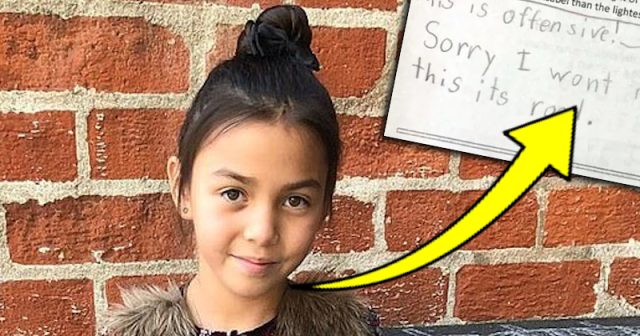When a 10-year-old girl came across one particular question on her math homework, it struck her as offensive, so she refused to write down the answer. Instead, she wrote a note to her teacher which earned her praise on social media.
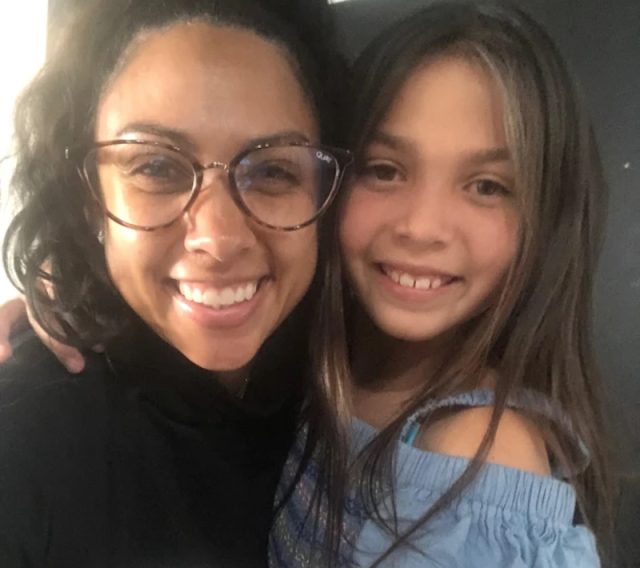
Naomi Pacheco was getting dinner ready when her 10-year-old daughter, Rhythm Pacheco, suddenly called her over to take a look at her math homework. The Utah resident, like other parents, is used to assisting her youngster with homework problems, but Rhythm didn’t require assistance this time.
“She said, ‘Mom, come and read this question! I am not answering this, this is so wrong,'” Naomi told TODAY. While working on her math assignment, the fourth grader came upon a question that bothered her. It read, “The table to the right shows the weight of three Grade 4 students. How much heavier is Isabel than the lightest student?”
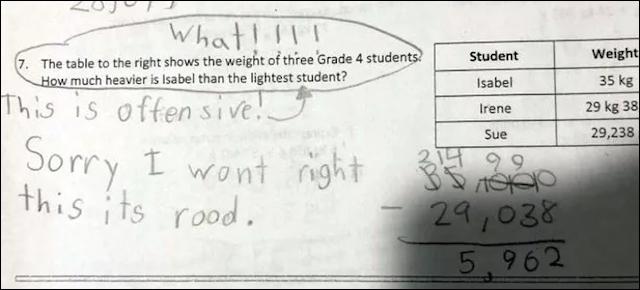
What was the problem? Rhythm was concerned that the question would offend young girls who may already feel insecure about their bodies. “Rhythm circled the question on the math worksheet and wrote ‘WHAT!’ She drew an arrow that pointed to the question and wrote, ‘Sorry I won’t write this, it’s rude.'” Naomi said.
The 10-year-old then wrote her teacher the following message explaining why she couldn’t answer the question: “Dear Mrs. Shaw, I don’t want to be rude, but I don’t think that math problem was very nice because that’s judging people’s weight. Also, the reason I did not do the sentence is cause I just don’t think that’s nice. -Love Rhythm”
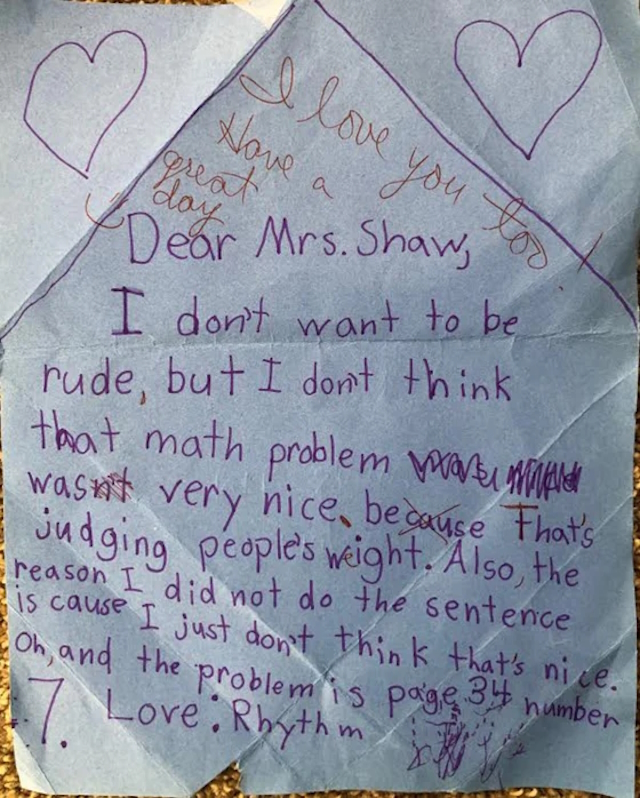
Rhythm did eventually solve the problem. However, she did not specify which child was heavier. “I wrote a note to my teacher because if it was on my homework then it could be on other people’s homework too and I didn’t think it should be on there. I was very nervous I would get in trouble for not writing out the question, but I still solved the problem. My teacher spoke to me about it and made me feel like she was on my side,” the 10-year-old said.
Rhythm’s math teacher at Grant Elementary School in Murray, Utah, grasped her point of view entirely. “Rhythm’s teacher was so responsive and handled the situation with such care. She told Rhythm that she understands how she would be upset about this and that she didn’t have to write out the answer. She even responded to her note with such love, correcting her grammar and told Rhythm, ‘I love you too!'” Naomi said.

The problem set was derived from Eureka Math, a popular curriculum program launched in 2013. Chad Colby, director of marketing communications at Eureka Math creator Great Minds, said the company utilizes both male and female names in their problem sets and has never received this type of feedback before.
“User feedback is a vital part of our culture. We are grateful to receive constructive feedback from students, teachers and parents alike. We apologize for any discomfort or offense caused by the question. Please know that we will replace this question in all future reprints, and suggest that teachers supply students with an appropriate replacement question in the interim,” he said.
D. Wright, the Murray City School District’s communications and public information specialist, said that the district will follow Eureka Math’s approach and is satisfied with how Rhythm’s teacher handled the problem. “The teacher was sensitive to the child’s concerns, and the child’s parent indicated to us that she felt we were supportive and understanding to her child and acknowledged her awareness of our positive intent,” Wright said.
While the math question may appear insignificant to some, Naomi Pacheco said she was glad that her daughter identified a potentially sensitive problem for young girls. “We are all beautifully made to be different shapes and sizes and it’s not acceptable to ask, ‘How much heavier is Isabel than the lightest student?’ Questions and comparisons such as these do more harm than good for self-esteem and body image,” Naomi said.
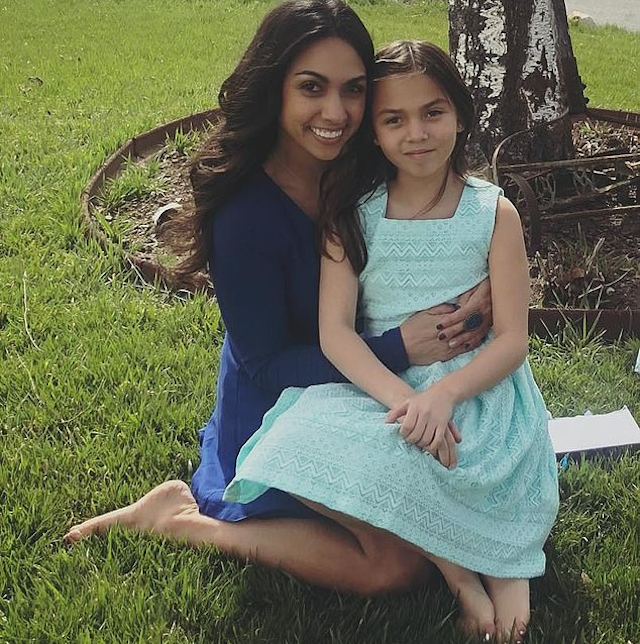
And right now, Naomi is really impressed with her daughter. “Rhythm’s dad and I were extremely proud of Rhythm for listening to her gut instincts and standing up for what is right,” she said. “We hope Rhythm’s story will encourage adults and children everywhere to listen to each other, have hard conversations and seek change. Creating a safe space for children, empowering parents and improving the conversations that we have with our children will build stronger relationships.”
Have we gotten too sensitive as a nation when even math homework has become offensive? Although I appreciate the mother and daughter’s point of view, I don’t believe they have reached a good resolution. There is a bigger problem here than the wording of the math question. The issue isn’t with making the “offensive” comparison. The issue is the shame associated with the analogy. As a society, we shouldn’t put so much pressure on young girls to be the “perfect” size.


